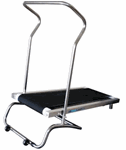If you’re one of the many people wondering if it’s OK to let your four-legged friend take a dip in the family swimming pool, you’ve likely noticed that it’s a highly debated issue. There are a couple of different factors that you should consider when deciding if you’re going to say “yay’ or “nay” to dogs in the pool.
During the hot summer months, pet owners want a place for their furry friends to both cool off and burn off some extra energy, without the threat of overheating. Swimming is the ideal hot-weather activity for dogs, and if you’re a pool owner, it seems like a no-brainer to let them jump right in. There are however a couple potential problems, both for your pool and your pet, that can arise if you’re not careful, but with a couple of quick fixes and a little planning ahead, both man and friend can safely enjoy the pool this summer.
Protecting Your Pool
Liners
Dog paws have claws and these claws can puncture, scrape or tear your expensive pool liner. Quick fix: The best way to protect against damage to the lining of your pool is to train your dog to use the stairs when getting in and out of the water. You should always be present when your dog is taking a dip, both for the safety of your pool and the dog. Keep dogs from swimming too close to the edge of the pool and from trying to climb out of the pool using anything but the steps.
Filters
The biggest debate over dogs in the pool usually stems from all that hair. Yes, it’s true, dogs do have a lot more hair than (most) humans but with a little extra attention, it shouldn’t cause a problem. The main drain and filtration systems of your pool are designed to remove excess hair and particles found floating around in the water. Quick fix: Empty the skimmers a little more often than you normally would. Allowing your pooch to take a swim every once in a while will not cause serious damage to the balance of the water or to filtration systems, as long as you take a little extra care in cleaning them.
Water Safety
Attached to all that hair is a long list of possible pool water contaminants such as dirt, leaves, bugs and fecal matter and is another main point for those who say “nay” to dogs in the pool. However, pool water contaminants, whether brought in by dogs or humans, are counter-acted by pool chemicals like chlorine. Quick fix: Spray down your dog with the hose before letting them get into the pool. A simple pre-swim rinse can help remove not only dirt, leaves and bugs, but also some extra hair, keeping it out of the pool in the first place.
Protecting Your Dog
Skin and Coat
Chlorinated pool water can dry out your dog’s skin just as it can dry out yours. Quick fix: Rinse your dog with the hose after swim time to remove any residual pool chemicals that can cause skin irritation. This is also extremely important as it stops your dog from ingesting too much chlorinated pool water later when he is cleaning himself and licking his fur.
Ears
Excess water and moisture can get trapped under those cute, floppy ears and potentially cause an infection. Quick fix: Dry your pooch off after his swim, paying extra attention to the ears. It may also save you from getting drenched when your dog decides it’s time for a shake.
Floatation Devices
Many dogs are natural born swimmers, but not all dogs are. If your dog is not a strong swimmer or is a little timid when it comes to the water, using a doggie floatation device is always a good idea. Available in a variety of sizes, it’s easy to find a perfect fit for your best friend. And, as we said before, it’s always best for you to be present whenever your dog decides to go for a swim.
In the end, the decision whether to let your dog swim in the pool or not comes down to personal preference. Some people say that the risk and extra effort required for sharing your pool with a dog is not worth it, but that is something only you can decide. Be sure to weigh the pros and cons and, most importantly, enjoy your pool this summer!
The Pool Guy Store is a leading retailer of residential and commercial pool supplies and products offering free shipping on every order of $79 or more.




